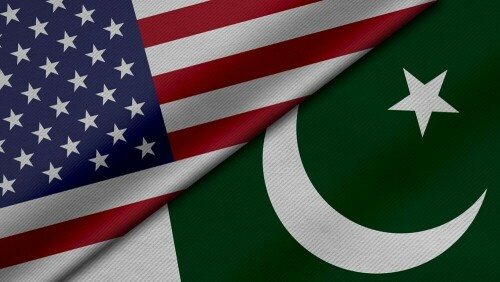NEW DELHI: India’s Supreme Court has asked the BJP-ruled central government if there was a timeline to convert Indian-held Kashmir from a union territory to a state.
But even as the court questioned the Modi government on the changes in the status of the territory after August 2019, Beijing ramped up pressure on New Delhi by publishing a map showing territories claimed by India as part of China.
A five-member bench headed by Chief Justice D.Y. Chandrachud on Tuesday heard a set of petitions against the abrogation of Article 370 on Aug 5, 2019, robbing the region of its special status and restructuring the state into two union territories.
The Supreme Court asked the government if there was a time frame and a roadmap for restoring the statehood of held Kashmir.
China’s new map ‘claiming Indian territories’ irks New Delhi
Under Indian law, state and union territories have separate statuses and differ in functionality. A state has an elected government — headed by a chief minister — and a legislature to frame laws. Meanwhile, a union territory is ruled by the central government through its appointed lieutenant governor. All executive and legislative decisions are also made by the government in New Delhi.
“We understand that these are matters of national security … But without putting you in a bind, you and the attorney-general may seek instructions on the highest level [if] there a timeframe in view? … Is there a roadmap?” Justice Chandrachud asked Solicitor-General Tushar Mehta, who appeared on behalf of the central government and the region’s administration.
The chief justice went on to ask if the parliament should not be allowed to convert a state into a union territory for a certain period, for specific national security needs.
“Why is it not possible for the union [central government] to say that right now in the case of a state, we have such an extreme situation in terms of national security, that we want for a certain period that a UT should be created. But this is not permanent, and this shall be back as a state” remarked CJ Chandrachud.
The solicitor general explained that the home minister had made the exact statement on the floor of the parliament.
China’s ‘new map’
Separately, India said on Tuesday it had lodged a strong protest with Beijing against the map that shows Aksai Chin and other parts of Ladakh and the northeastern Indian state of Arunachal Pradesh as part of Chinese territory.
The changes in the status of held Kashmir after the abrogation of Article 370 also affected the Ladakh region, which was revamped as a union territory in 2019. China had strongly protested at the time over what it called “unilateral changes” in the region’s status.
Indian and Chinese armies have been jostling in recent years to control border areas for strategic advantage, and while no firearms were used, the occasionally vicious struggle resulted in fatalities on both sides in April 2020.
The map was published on Tuesday, just days after Indian Prime Minister Narendra Modi met with Chinese President Xi Jinping and discussed resolving the boundary situation.
India’s External Affairs Minister S. Jaishankar called the new map “absurd”, while its publication was also criticised by the opposition Congress party.
“We reject these claims as they have no basis. Such steps by the Chinese side only complicate the resolution of the boundary question,” said the Ministry of External Affairs (MEA) spokesperson in a statement.
The spokesperson said “a strong protest through diplomatic channels” has been lodged with the Chinese side on the so-called 2023 “standard map”.
According to Chinese state media, the map was released by the Ministry of Natural Resources during what is being called “National Mapping Awareness Publicity Week” in China.
The move would be followed by other digital and navigational maps. Taiwan and other areas in the South China Sea have also been included as Chinese territory.
Speaking to NDTV, Mr Jaishankar, who served as Ambassador to China from 2009 to 2013, called it an “old habit” of the Chinese government.
“Just by putting out maps with parts of India ... doesn’t change anything. Our government is very clear about what our territory is.”
According to The Hindu, while releasing the map is an annual exercise, the timing of its release was significant ahead of the G-20 summit in New Delhi from September 9 to 10.
Published in Dawn, August 30th, 2023













































Dear visitor, the comments section is undergoing an overhaul and will return soon.